Opinion
Qantas’ interior plans for epic long-haul flights take out top award
Michael Gebicki
The TripologistBilled as the Oscars of aircraft cabin interiors, the Crystal Cabin Award winners were announced in Hamburg on May 18, 2024, part of the annual Aircraft Interiors Expo (AIX). This is the only international award for innovative aircraft cabin products and concepts, a showcase of creative designs and seating concepts that might make their way into the aircraft cabins of the future.
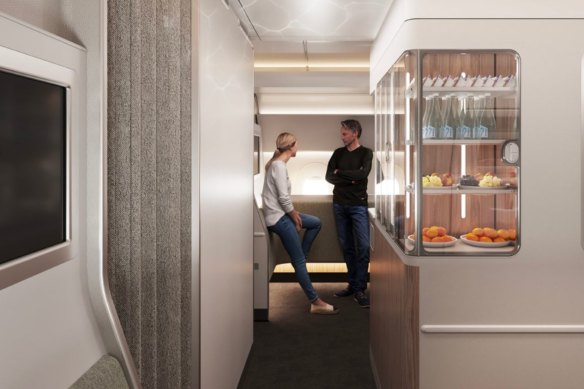
Qantas’ Wellbeing Zone on board its non-stop flights from Australia’s east coast to London and New York took out the passenger comfort award.
The products that generated the most excitement in 2024 were not necessarily the winners. Devices for cabin crew to dispose of food and liquid waste, safety bags for containing cabin fires caused by lithium-ion batteries and eco-efficient cabin sidewalls – all among the category winners – have no noticeable impact on the in-flight passenger experience.
As in previous years, business class is where creativity and innovation come to rest, and those products were conspicuously absent from the podium.
Business class is where the money is, and where design studios, airlines and tech companies focus their attention.
Passenger comfort
Qantas took the award for passenger comfort with its Wellbeing Zone. Created by Diehl Aviation, the zone will feature on the Airbus A350 aircraft that Qantas will use for its 20-hour Project Sunrise flights between east coast Australia and New York and London, now rescheduled to begin in 2026.
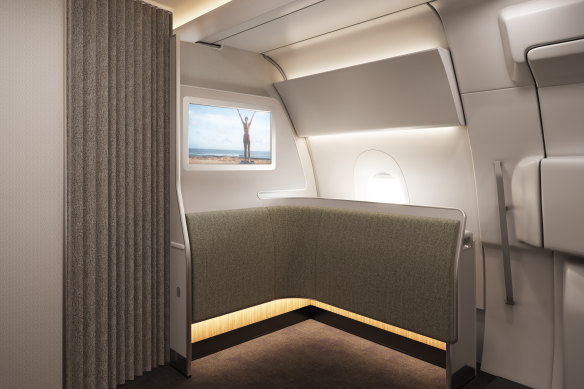
The planned Wellbeing Zone on board Qantas’ Airbus A350-1000.
Located at the front of the economy cabin, the central corridor of the zone is a glass-fronted cabinet with self-serve refreshments. On either side is an L-shaped padded section that would probably accommodate two or three standing passengers. According to Qantas, the Wellbeing Zone is “a space where you can follow specially curated guided movements on large monitors and enjoy a selection of healthy refreshments.”
Unlike the bars that some airlines provide for their premium class passengers, the zone is designed for a quick break rather than lingering, but is it enough to ease the discomfort of a 20-hour flight in an economy seat?
Runner-up in this category is Safran’s Signature seat. This is a pre-reclined seat, therefore no arguments between passengers who recline at inconvenient times and those sitting behind.
Another concept shown at this year’s AIX that parallels the Wellbeing Zone is the Perch from Boeing’s Encore subsidiary. This is a relaxation area that fits within the aisles of a wide-body aircraft, about the size of a standard onboard galley. Inside is a bar unit and a large OLED screen that could be used to beam messages – for example, information about baggage carousels on arrival, destination weather reports or a reminder to exercise and hydrate.
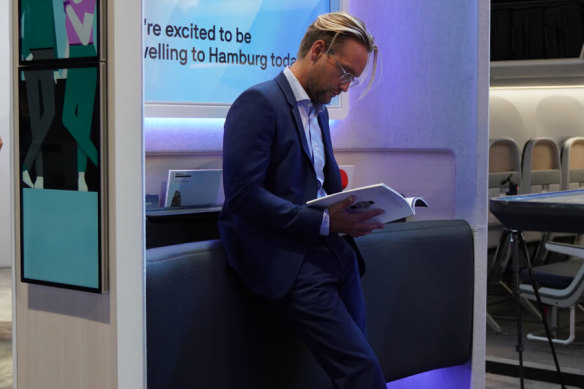
The Perch.
Opposite the screen is a cushioned mini banquette, the perch part of Perch, and the name is a reminder that this is a brief rest and stretch zone, not a place to hang out. The ceiling is a curved OLED panel which shows a star-filled sky in the publicity images, but there are more imaginative uses, for example a rolling display of National Geographic-type images to remind us just how special our planet is.
Another product that Australians will see in the economy cabins of Qantas’ ultra-long distance Project Sunrise flights is the Recaro R3 seat, another AIX exhibit. Formerly known as the CL3810, the Recaro R3 has a seat pitch of 33 inches (84 centimetres), just short of the class-leading 34 inches (86 centimetres) that Japan Airlines offers on some of its 777-300ERs and 767s. The seat has a six-way adjustable headrest and when reclined, the front edge flexes, relieving pressure on the legs.
On the seat back is a 34-centimetre OLED screen with 4K resolution and USB-C power outlet. However, there’s a seat-back pouch below the tray table, which reduces legroom when it’s filled. Recaro Aircraft Seating’s R series seats are made from a combination of sustainable materials such as cork, wood and recycled fishing nets. At the end of its life cycle the seat can be totally recycled.
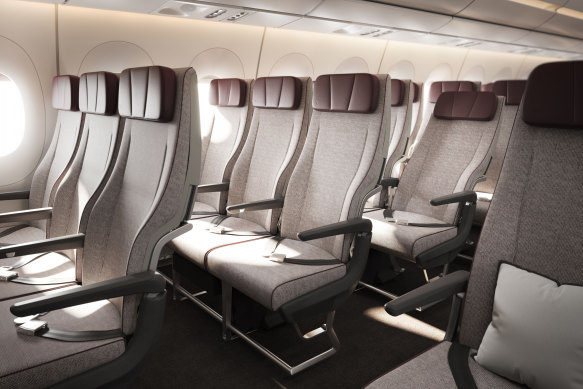
Qantas will use RECARO’s R3 seats on its ultra-long-haul flights.
Thales Avionics took out the award for IFEC & Digital Services with its FlytEdge, one of the innovations more likely to enhance the passenger experience. FlytEdge is an enormous data centre that streams from the cloud, making it possible to view news events and live sports and promising passengers a more personalised in-flight entertainment experience with greatly expanded content – going “beyond the blockbuster to bring infinite bingeable choices to passengers,” in Thales’ own words.
The Maya seat
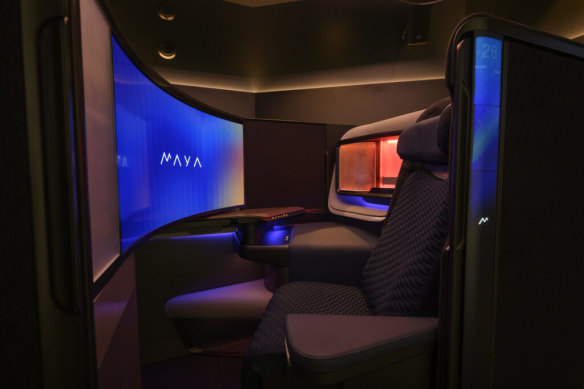
The Maya seat, with its giant screen for business class, stole the show.
The Maya seat from Collins Aerospace stole the limelight at this year’s AIX. Developed in collaboration with Panasonic Avionics, Maya adds a 114-centimetre wraparound OLED video screen with stereo speakers embedded in the headrest to a business class seat to create an immersive experience. Packed with tech, the seat responds in sync with the feed from the cinema screen, so a point-of-view motorbike ride gives a different impression from a skier racing an avalanche to riding with Tom Cruise in his personal P-51 Mustang. The lie-flat seat is a stunner in its own right with tremendous aesthetic appeal and intelligent design.
Cabin concepts
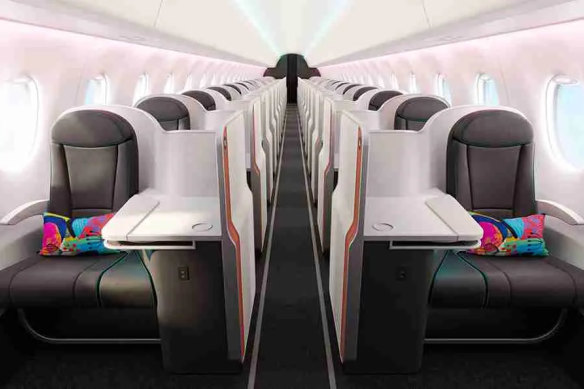
BermudAir’s Aisle Class.
BermudAir took the gong in this category at AIX with its Aisle Class Suites, a business class seat in its Embraer E175 narrow-body aircraft. BermudAir launched less than a year ago as an all-business airline, but since its aircraft were picked up from the ashes of Flybe they were all-economy seats and BermudAir business class was two economy seats per passenger.
With the Aisle Class Suites, the airline has replaced the 2-2 configuration economy seating with 1-1 business class seats. This is a slightly narrow, shell-type seat with a supersized, fixed tray table on the aisle side of the seat. Airlines face problems installing business class seats in single-aisle aircraft, but the Opera seat from French aerospace company Stelia is an outstanding example, bringing lie-flat seating and privacy doors to narrow-body aircraft.
A special seat for wheelchair users
In partnership with UK-based consortium Air4All, Delta Flight Products showed an adaptable seat that allows wheelchair users to dock their own chair. The seat base flips up and retractable hooks embedded in the floor tether the wheelchair, locking it into position when the aircraft is in flight. The seat is available in two versions, for both premium and economy class cabins
Winners of the 2024 Crystal Cabin Award
- Cabin concepts: Factorydesign, Coop. BermudAir – the BermudAir Aisle Class Suite
- Material and components: Collins Aerospace – STARLight
- Cabin systems: Safran Cabin – the CUBE
- Health and safety: Accenture GmbH – Accenture PED safety bag
- Passenger comfort: Diehl Aviation, Coop. Qantas Airways Ltd – the Wellbeing Zone
- IFEC and digital services: Thales Avionics – FlytEdge
- Sustainable cabin: Diehl Aviation – ECO Sidewall
- University: Tongji University, Coop. Dupont – Flexifold
Sign up for the Traveller newsletter
The latest travel news, tips and inspiration delivered to your inbox. Sign up now.